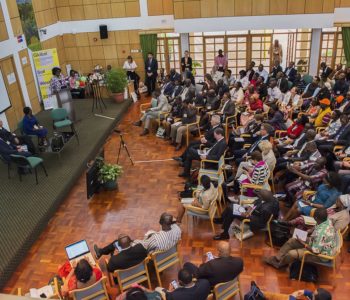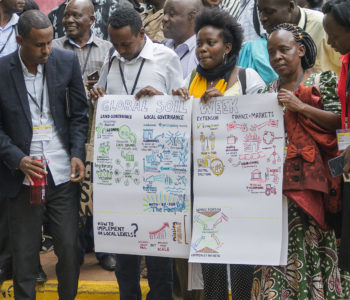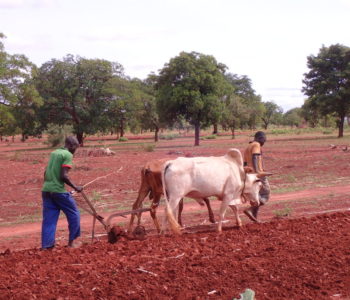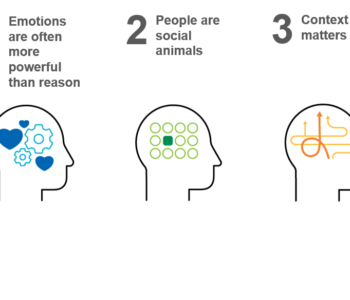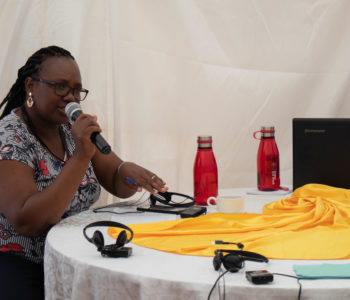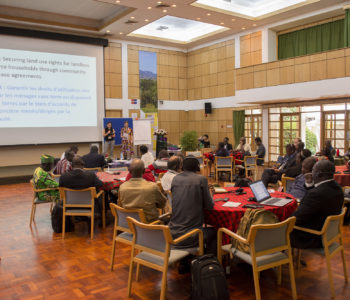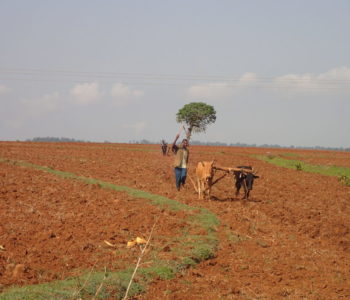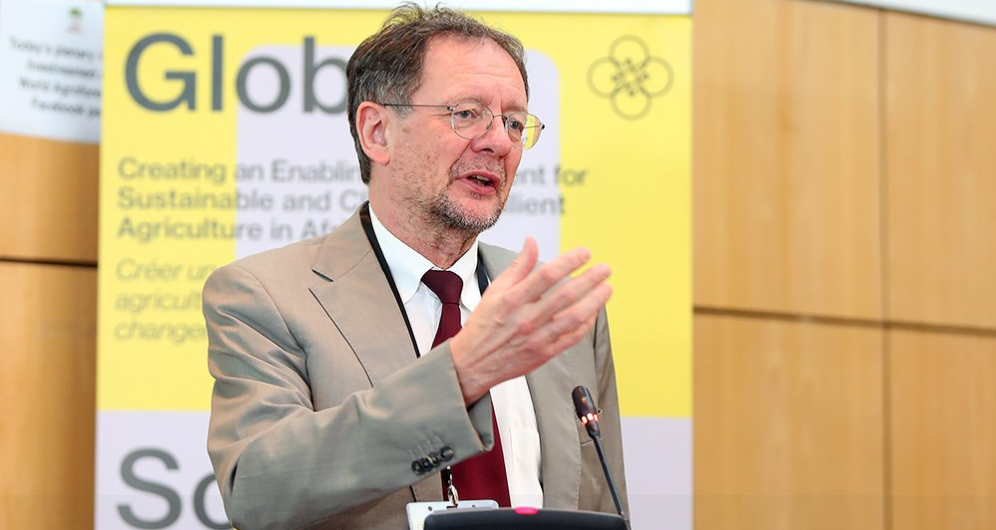
Bridging the gap between global goals and local realities
Bridging the gap between global goals and local realities
By Atula Owade
When Dr. Alice Kaudia took to the stage, everyone kept quiet with the anxiousness to hear from the co-moderator for the Global Soil Week 2019.
Everyone was keenly listening, as she conducted the opening plenary on day 3 of the Global Soil Week 2019. Highly experienced in agricultural and environmental sciences, she effortlessly bounced from one topic to another as she welcomed participants to the high-level segment of the conference, after the success of the technical segment.
Reflecting on the need to address the “Missing Middle” needed for creating an enabling environment for sustainable and climate resilient agriculture in Africa, she paused and invited a troupe of drummers who energized the crowd with their amazing set piece of African culture. A few minutes later, she welcomed Alexander Muller to give his opening remarks.
In a loud voice, he said “soil is the basis of all life. If we lose soils, we lose our primary life support system. Unfortunately, too many people have the impression that food can be produced without good soils through heavy use of fertilizer.”
Further to his quote, he makes an even more impassioned statement:
“Can you imagine, the world loses 24 billion tons of fertile top soils annually? Yet, protecting soils is not receiving the kind of attention expected for such a vital natural resource. In my previous work with the FAO itself, it took me more than 3 years to establish a global soil partnership.”
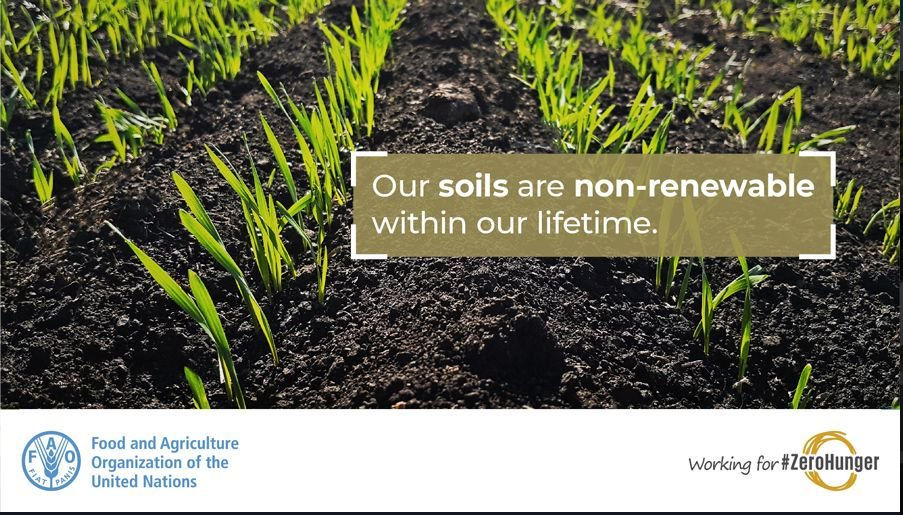
The opening remarks from Alexander illustrated the gravity of the situation the world is facing if soils are not protected. The TMG Managing Director does not mince his words on issues involving protection of soils; there are far too many evident based soil and environmental problems that need to be addressed and treated seriously in order to minimize wide-scale problems in the future.
He mentioned that there are three problems that must be addressed for sustainable development to be successful. One of the problems is hunger and malnutrition. The number of people who go hungry is rising, particularly in the global south and Africa. At the same time, there is the problem of climate change. This phenomenon threatens ecosystems, agriculture and food security on a global scale. The third of the problem is the loss of biodiversity which is accelerating at an alarming rate. The United Nations warned that more than one million species are facing the threat of extinction in the next couple of years.
He coughs, and then continues speaking on his evident-based points:
“Without healthy soils, it would be impossible to solve these problems and several others that are linked to soil ecosystems. To combat hunger, we need soils that are in good condition and hence capable of producing enough food for an increasing global population. Neither can we counter climate change without soil since soils of good quality are a formidable carbon sink. Of course, healthy soils also support a large number of plant and animal species, to protect the earth’s biodiversity”.

After a short pause, he continues from where he left off:
“The Global Soil Week was started to address these challenges. Having observed the low attention that soils received in global environmental discourse and the urgency of the situation, we developed a platform through which solutions can be sought. Now on its fifth edition, I am glad to see you all here and the progress made so far. This shows your commitment towards protecting soils”, he mentioned.
A smile flashes on his face as he moves into the next phase of his speech:
“It is not all doom and gloom, though. There are certain achievements that have been achieved so far. The importance of soil protection is slowly gaining traction and is indeed exemplified by SDG 15.3 whose aim is to achieve a land-degradation neutral world by 2030. This and other international declarations are a step in the right direction. But…”
The smile fades away.
“…Where is the action? Not enough is happening on the ground, where real people are daily encountering problems associated with land degradation. We don’t fully transform complex scientific analyses of these problems into concrete solutions. Which begs the question, how can global goals be implemented at the local level?”
Instinctively, he indicates that he is approaching the end of his speech.
“This is the question we have been trying to address over the past 2 days of the technical segment. We have to find ways of localizing the Sustainable Development Goals (SDGs). We can achieve multiple goals such as tackling food insecurity and climate change by protecting soils. We, therefore, need to find ways of bridging the “missing middle” between global goals and local realities. Through the Global Soil Week 2019, we believe that this can only be achieved if there is an enabling environment which is the missing link”.
As he concludes, he rhetorically asks the audience what needs to happen to create such an enabling environment for sustainable and climate resilient agriculture in Africa. He asks them to hold their answers for the peer review workshops on the conference dimensions such as land governance, local governance, extension services and market and finance.
He, briskly, walks away from the podium.
Dr. Kaudia steps back to the stage, ready to welcome the other speakers on Day 3 of the Global Soil Week 2019.
